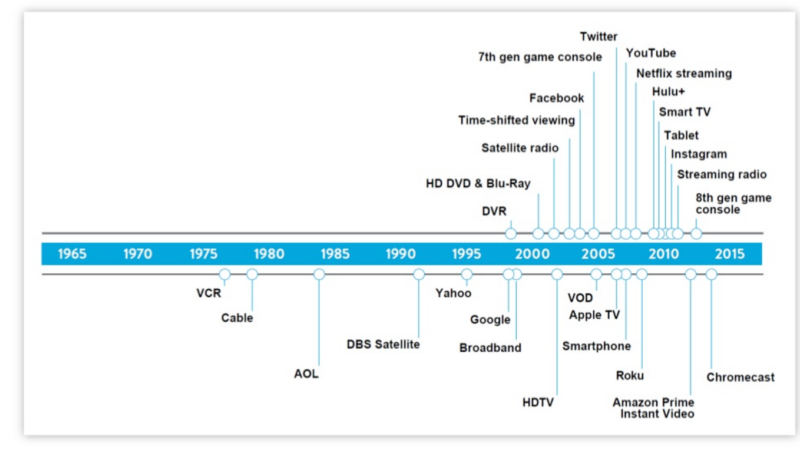PCWorld – Video Everywhere
All of a sudden, videos are all over the Web. Here’s how to find them and watch them anywhere, whether on your PC, TV, or mobile device.
by Jim Feeley, PCWorld
Your Video, on the Web
You just came back from a vacation in Cancun, and you want to wow your family with videos of your Jet Ski prowess. Or maybe you got your friend’s “sick day” hole-in-one on your cell phone, and you want to share it with your buddies but not your boss. Or perhaps you caught dramatic rescues of flood victims and want to share the clip with the world.
YouTube and the dozens of easy-to-use, free video-sharing sites like it can help you do all those things. Many of the sites offer the same core features; where they differ is in their popularity, their support for video to and from mobile devices, and their ability to restrict viewing to people you select (see the chart below).
Share and Share Alike
 Video-sharing sites are currently more similar than they are distinctive, and the services will probably become even more alike as they draw inspiration from one another. Typically they let you upload MPEG, QuickTime, and Windows Media formats, which the sites will then convert to Flash Video (.flv) files for hosting and playback. Flash offers good image quality and fast playback, and over 95 percent of systems already run it. Practically every site gives HTML links to embed your video in your blog or other Web page, or you can e-mail the link to friends and family.
Video-sharing sites are currently more similar than they are distinctive, and the services will probably become even more alike as they draw inspiration from one another. Typically they let you upload MPEG, QuickTime, and Windows Media formats, which the sites will then convert to Flash Video (.flv) files for hosting and playback. Flash offers good image quality and fast playback, and over 95 percent of systems already run it. Practically every site gives HTML links to embed your video in your blog or other Web page, or you can e-mail the link to friends and family.
All the sites present some hassles, as well. Over most DSL and cable lines, expect to spend 3 to 20 minutes uploading a 3-minute clip. Most services have a license to use your clips any way they want, and you must indemnify them from any liability for your content.
But such sites still have differences, a key one being traffic. According to online market researcher Hitwise, in late spring YouTube was by far the most frequented sharing site with 43 percent of all visits to video sites. Popularity has its downside: Although recent, well-known, and highly rated videos are called out to visitors, the 35,000 new clips added each day make it easy for your opus to get lost in the YouTube video jungle.
If you want a breadth of video options for delivery to different devices, other services merit consideration. Google Video automatically generates downloadable iPod and PSP versions of free content. Several services, like Eyespot, offer delivery to mobile phones. If you’re creating longer pieces, you may need a site that doesn’t limit file size or length, like Google Video or Ourmedia.org.
Several sites, like Eyespot, Jumpcut, and YouTube, also let you send clips via MMS (Multimedia Messaging Service) over high-speed cellular networks such as EvDO and UMTS directly to your account’s page. Sprint and Verizon offer similar–though less flexible–features that let their users upload and share videos. And services such as Abazab.com and Umundo.com let you send phone video via MMS directly to your pages on MySpace and My Yahoo, for example. All are free (for now), with Jumpcut’s simple editing making it the most attractive.
Once your video is posted, controlling who sees it is difficult–just ask Hollywood. Or Paris Hilton. If you need some privacy, send clips to a site that supports private groups where you specify who can see your video. Know, however, that privacy features can be defeated, so if you’re worried about any dire consequences if your video gets out, don’t post it at all.
No site stands far above the rest, but Eyespot’s balance of innovative cell-phone features, private groups, downloadable clips, and online editing and mixing raises it just a bit above its peers.
However, with many of these services being up-front about their beta status, and others in denial, the situation may change tomorrow as new features debut and sites try to figure out how to pay for all the technology and bandwidth they’re giving away. Sites like VideoEgg get revenue from licensing their uploading technology to AOL, while Revver and others insert ads into submitted videos (some share revenue with submitters).
Video sharing has become so popular, Microsoft is getting into the game. Its YouTube-like project, code-named Warhol, is scheduled to go live by year’s end, though no details are currently available.
Regardless of coming changes, one thing will remain constant: On the Net, only a thin line separates professional and amateur content–which means you could be the next Web-video idol.
Eyespot Tops Competing Video-Sharing Sites
In an ever more crowded field, Eyespot has the edge for now, thanks to its editing tools and mobile delivery options.


